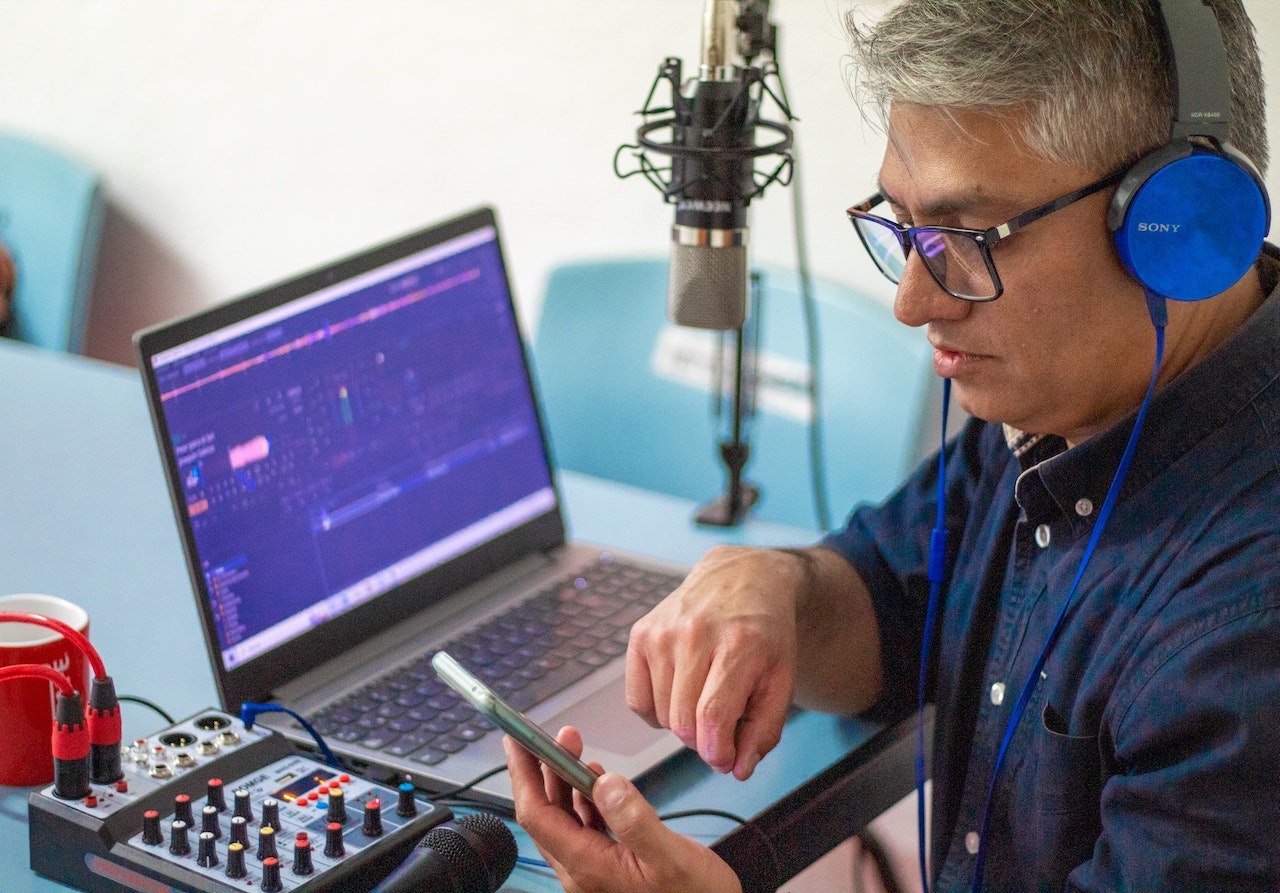You’re tuning into your favorite podcast, and there it is – a seamlessly integrated ad that feels just right. Ever wondered what magic lies behind these podcast ads? More importantly, if you’re looking to dive into this world of auditory marketing, what’s it going to cost you?
In the ever-evolving landscape of digital marketing, podcast advertising has emerged as a powerful tool. It’s personal and direct and creates a unique connection with listeners. But, as with any marketing strategy, understanding the costs involved is crucial.
In this article, we’re not just scratching the surface; we’re diving deep into the world of podcast ad costs. From audience demographics to ad placements, we’ll explore the myriad of factors that influence how much you’ll spend – and potentially earn – in the realm of podcast advertising.
Ready to unravel the mysteries of podcast ad pricing? Let’s embark on this auditory journey together.
Related: PODCAST PROMOTION: The Complete List
Contents
Factors Influencing Podcast Ad Costs
When it comes to podcast advertising, one size does not fit all. Several key factors play a pivotal role in determining the cost of your ad. Understanding these elements is essential for making informed decisions and maximizing your investment.
Audience Size And Demographics
The impact of audience size and demographics on podcast ad costs is profound. Larger audiences typically command higher prices, but there’s more to it than just numbers. Demographics such as age, location, income level, and interests play a crucial role.
For instance, a podcast with a smaller, niche audience of high-income professionals might charge more than a broader, general-interest show with a larger listenership. This is because targeted demographics often lead to higher engagement rates and better conversion potential for advertisers.
Consider a tech podcast with a dedicated following of IT professionals. An ad placed here, although potentially reaching fewer people, is more likely to resonate and drive action among its listeners, who are deeply interested in the subject. This targeted approach often justifies a higher ad spend, making demographics as crucial as audience size.
Podcast Genre And Niche

Image by DCStudio on Freepik
The genre and niche of a podcast directly influence ad costs. Different genres attract different types of audiences and engagement levels. For example, podcasts focusing on niche topics like personal finance or health and wellness can command higher ad rates. This is because they cater to specific interests, often resulting in a highly engaged and loyal audience.
Moreover, niche podcasts offer advertisers a unique opportunity to tailor their message to a more receptive and relevant audience. A podcast about entrepreneurship, for instance, would be an ideal place for B2B services to advertise, as the listeners are likely to be business owners or aspiring entrepreneurs interested in tools and services that can aid their business growth.
Ad Placement Within the Podcast
Ad placement within a podcast significantly affects listener engagement and, by extension, the cost. Generally, there are three types of placements: pre-roll (beginning of the episode), mid-roll (middle), and post-roll (end).
Pre-roll ads are often shorter and can grab the listener’s attention right away, but there’s a risk of them being skipped. Mid-roll ads, placed strategically during a natural break in the content, tend to have higher engagement as listeners are less likely to skip them.
They are typically longer and allow for a more comprehensive message. Post-roll ads, while potentially reaching the most loyal portion of the audience, risk being missed as listeners may not stay till the very end of the episode. The placement decision should align with the advertiser’s goals: immediate brand visibility might favor pre-roll, while a detailed product story might work better in a mid-roll slot.
Ad Length and Type
The length and type of podcast ads are crucial in determining cost and effectiveness. Shorter ads, around 15-30 seconds, are typically less expensive but might only allow for a brief mention of the product or service. Longer ads, up to 60 seconds or more, provide room for storytelling, detailed descriptions, and stronger calls to action, making them more impactful but also more expensive.
The type of ad also matters. Host-read ads, where the host personally endorses the product, often carry more weight and cost more due to the personal connection hosts have with their audience. Produced ads, on the other hand, offer more control over the content and presentation but might lack the personal touch of host-read messages.
Understanding Pricing Models In Podcast Advertising

Image by DCStudio on Freepik
When it comes to podcast advertising, the pricing model you choose can significantly impact your campaign’s success and ROI. Each model offers different benefits and suits various advertising goals and budgets. Let’s explore the three primary pricing models in podcast advertising: Cost Per Mille (CPM), Cost Per Acquisition (CPA), and the Flat Fee model.
Cost Per Mille (CPM) Model
The Cost Per Mille (CPM) model is one of the most commonly used pricing structures in podcast advertising. CPM stands for cost per thousand impressions (or listens in the case of podcasts). This model charges advertisers based on the number of times their ad is heard.
For example, if a podcast charges a $25 CPM rate and your ad is heard 10,000 times, the cost of your podcast advertising campaign would be $250. The CPM rates can vary significantly based on factors like the podcast’s popularity, audience demographics, and ad placement within the episode.
Niche podcasts with highly engaged audiences can command higher CPM rates, even if their listener numbers are lower compared to more general podcasts. This model is ideal for advertisers looking to increase brand awareness and reach a broad audience.
Cost Per Acquisition (CPA) Model
The cost-per-acquisition (CPA) model is performance-based, making it a popular choice for advertisers focused on conversions. Under this model, you pay only when a listener takes a specific action, such as making a purchase or signing up for a service, as a direct result of hearing your ad. This is often tracked through unique promo codes or dedicated landing pages.
The CPA model is particularly attractive because it directly ties advertising costs to the results, offering a clear measure of ROI. It’s a favorable option for advertisers with a strong call to action and those who can track conversions effectively. However, it requires a clear understanding of the customer journey and a strong alignment between the podcast content and the advertised product or service.
Flat Fee Model
The Flat Fee model is straightforward – advertisers pay a predetermined amount for their ad to be featured in a podcast. This fee is not dependent on the number of listeners or specific actions taken. It’s a simple and predictable pricing structure, often preferred by smaller podcasts or those just starting to monetize.
This model is particularly beneficial for advertisers with a fixed budget who want to avoid the uncertainties of variable costs. It allows for easy financial planning and is often used for sponsorships or branded content segments. However, the downside is that it doesn’t provide the performance metrics or scalability offered by CPM or CPA models.
Hybrid Model
The Hybrid Model in podcast advertising is a blend of CPM and CPA models. This approach offers a balance between paying for exposure and paying for results. Advertisers pay a base rate for the number of impressions (CPM) and an additional cost for specific actions taken by listeners (CPA), such as website visits or purchases using a unique promo code.
This model is particularly effective for campaigns aiming to build brand awareness while also driving conversions. It allows advertisers to benefit from the broad reach of the podcast while also tracking and incentivizing specific listener actions. The Hybrid Model is ideal for advertisers who want to mitigate the risks of solely committing to a performance-based model or a purely exposure-based model.
Sponsorship Model
The Sponsorship Model is a more comprehensive approach to podcast advertising. Instead of just buying ad slots, advertisers sponsor entire episodes or a series of episodes. This model often includes integrated mentions, product placements, and podcast host endorsements, providing a deeper level of engagement with the podcast audience.
Sponsorships are typically negotiated on a flat fee basis and can include additional benefits like social media shoutouts, website mentions, and inclusion in the podcast’s promotional materials. This model is best suited for brands looking to establish a strong association with the podcast’s content and audience, leveraging the host’s influence to create a more authentic connection with listeners.
Value-Based Pricing
Value-based pricing is a less common but emerging model in podcast advertising, where the cost is determined by the perceived value of the podcast’s audience to the advertiser. Instead of standard metrics like listener numbers or actions taken, pricing is based on how valuable the audience is in terms of their buying power, loyalty, or alignment with the advertiser’s target market.
This model requires a deep understanding of the podcast’s audience demographics and behavior. It’s particularly suitable for niche podcasts with highly engaged audiences that may not be large in numbers but are extremely valuable due to their specific interests or purchasing power.
Advertisers who choose this model are typically looking to reach a very targeted group of listeners who are likely to have a high interest in their product or service.
Related: Podcast Networks For Small Podcasts
Measuring The ROI Of Podcast Ads
In the dynamic world of podcast advertising, measuring the return on investment (ROI) is crucial for understanding the effectiveness of your ad spend. It’s not just about how much you spend, but more importantly, about what you get in return.
We’re about to explore the key performance indicators (KPIs) that shed light on the success of your podcast ads and the various tools and techniques available for tracking and analyzing ad performance.
Key Performance Indicators (KPIs) For Podcast Ads

Image by serhii_bobyk on Freepik
When assessing the ROI of podcast ads, several KPIs are essential:
Listen Through Rate (LTR)
Listen Through Rate (LTR) is a critical metric in podcast advertising. It measures the percentage of your ad that listeners hear. A high LTR indicates that your audience is engaged and less likely to skip your ad. This metric is vital for understanding how captivating your ad is and whether it resonates with the podcast’s audience. An engaging and well-placed ad should ideally maintain or even increase the LTR, signifying that listeners are staying tuned in to hear your message.
Conversion Rate
Conversion Rate in podcast advertising refers to the percentage of listeners who take a desired action after hearing your ad. This could be visiting a website, signing up for a newsletter, or making a purchase. Tracking conversions is often done through unique promo codes or custom URLs mentioned in the podcast. This KPI is crucial for understanding the effectiveness of your ad in driving listener action and is a direct indicator of the ad’s success in achieving its marketing goals.
Brand Lift
Brand Lift measures the impact of your podcast ad on listeners’ awareness and perception of your brand. This can include changes in brand recognition, favorability, and purchase intent. Brand Lift is typically assessed through surveys conducted before and after the ad campaign. These surveys can reveal how effectively the ad has altered the audience’s perception of the brand, making it a valuable metric for long-term brand-building efforts.
Audience Growth
Audience Growth as a KPI looks at the increase in the podcast’s listener base or subscriber count throughout your ad campaign. This metric is particularly relevant for ongoing or repeated ad campaigns. A positive trend in audience growth can indicate the ad’s effectiveness in attracting and retaining new listeners, contributing to the overall success of the podcast and the potential reach of your ad.
Cost Per Acquisition (CPA)
Cost Per Acquisition (CPA) is a financial metric that calculates the cost of acquiring a new customer through the podcast ad. It is determined by dividing the total ad spend by the number of conversions (actions taken by listeners). CPA is a crucial metric for evaluating the financial efficiency of the ad campaign and understanding how much you are spending to gain each new customer.
Return on Ad Spend (ROAS)
Return on Ad Spend (ROAS) measures the revenue generated from the podcast ad campaign against the total ad spend. It is calculated by dividing the total revenue by the ad spend. A ROAS greater than 1 signifies that the ad campaign is profitable. This metric is essential for assessing the overall financial success of the ad campaign and guiding future investment decisions.
Tools And Techniques For Tracking Ad Performance
To effectively measure these KPIs, various tools and techniques are employed:
Attribution Platforms
Attribution platforms like Podsights or Chartable provide specialized services for tracking listeners’ actions after they have been exposed to a podcast ad. These platforms can link ad exposures to specific listener behaviors, such as website visits or purchases, offering a clear picture of the ad’s direct impact.
Analytics Dashboards
Many podcast hosting platforms offer analytics dashboards that provide insights into listener demographics, episode downloads, and engagement metrics. These dashboards can help advertisers understand who is listening to the ad and how they are engaging with the podcast content, offering valuable data for tailoring future ad campaigns.
Custom URLs and Promo Codes
Using unique URLs or promo codes in podcast ads allows advertisers to track specific listener actions and conversions directly attributable to the ad. This technique is effective for measuring direct response campaigns and provides concrete data on the ad’s impact on listener behavior.
Listener Surveys
Conducting listener surveys before and after the ad campaign can provide qualitative insights into changes in brand awareness and perception. Surveys can reveal how the ad has influenced listeners’ views of the brand, offering valuable feedback for refining ad content and strategy.
Third-Party Analytics
Integrating podcast advertising campaigns with third-party analytics tools can offer a more comprehensive view of listener behavior and campaign performance. These tools can track a variety of metrics, including website traffic and user behavior, providing a broader context for the ad’s impact.
By focusing on these KPIs and utilizing the appropriate tools and techniques, advertisers can effectively measure the ROI of their podcast ads, making informed decisions for future campaigns.
FAQs
How Much is a 30-Second Ad on a Podcast?
The cost of a 30-second ad on a podcast can vary widely based on several factors, including the podcast’s audience size, demographics, genre, and the ad’s placement within the podcast episode. The average cost per mile (CPM) for a 30-second ad ranges from about $18 to $25.
This means if a podcast has 10,000 listeners, a 30-second ad could cost between $180 and $250. However, these podcast advertising rates can be higher for popular podcasts with large, engaged audiences or those in a specific niche that aligns closely with the advertiser’s target market.
How Much Do Podcasts Get Paid Per Ad?
The payment podcasts receive per ad depends on the same factors that influence ad costs: audience size, demographics, genre, and ad placement. Using the CPM model, a podcast with a $25 CPM rate for a 30-second ad and an average of 10,000 listeners per episode would earn $250 per ad.
It’s important to note that podcasts with highly targeted or niche audiences might command higher rates, even with smaller listener numbers, due to the value of their specific audience to certain advertisers.
How Many Ads in a 30-Minute Podcast?
The number of ads in a 30-minute podcast can vary, but there’s an industry standard that many podcasts follow to balance content and advertising. Typically, a 30-minute podcast might have one pre-roll ad at the beginning, one to two mid-roll ads in the middle, and possibly a post-roll ad at the end.
This structure ensures listener engagement is maintained without overwhelming them with ads. However, the exact number can differ based on the podcast’s format and the agreement between the podcast and its advertisers.
Should I Pay to Advertise My Podcast?
Deciding whether to pay for advertising your podcast depends on your goals, budget, and the stage of your podcast. If you’re looking to grow your audience quickly, especially in a crowded market, paid advertising can be an effective strategy. It can help increase visibility and attract listeners who are interested in your content but haven’t discovered your podcast yet.
Paid advertising can be particularly beneficial if you have a clear target audience and choose platforms where your potential listeners are likely to be engaged. This could include advertising on other podcasts with a similar audience, using social media ads, or even exploring platforms like Spotify or Google Ads.
However, it’s important to weigh the potential benefits against the cost and consider other organic growth strategies, such as social media promotion, collaborations with other podcasters, or SEO optimization for your podcast. For many new or smaller podcasts, a combination of organic growth efforts and selective paid advertising can be a balanced approach to growth.
Final Thoughts
Navigating the world of podcast advertising can initially seem like a complex journey, but with the right knowledge and strategy, it becomes a path laden with opportunities. Understanding the nuances of ad pricing models, from CPM to CPA and flat fees, is crucial for advertisers aiming to maximize their ROI. For podcasters, knowing the value of their platform and audience is key to setting fair and profitable ad rates.
The decision to invest in podcast advertising, whether as an advertiser or a podcaster looking to grow their audience, should be informed by a clear understanding of the audience, the effectiveness of different ad types and placements, and the overall goals of the campaign.
With podcast listenership continually on the rise and the medium’s unique ability to forge a deep connection with audiences, podcast advertising stands out as a powerful tool in the digital marketing arsenal.
As we’ve explored, the cost of a 30-second ad can vary, and the number of ads in a 30-minute podcast should balance listener experience with revenue goals. For those considering advertising their own podcast, weighing the potential benefits against the podcast advertising costs is essential. In the end, whether you’re a seasoned marketer or a budding podcaster, the world of podcast advertising offers a dynamic and engaging way to reach and grow your audience.


